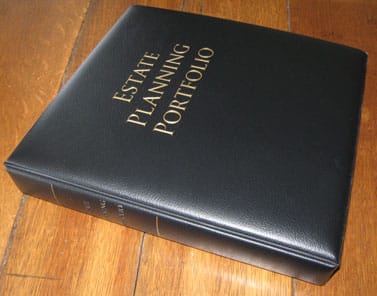If you already have an estate plan, congratulations. However, do you remember where you put it? Does anyone but you know where it is? According to a recent article from The Press-Enterprise, “2023 check list: How to organize your estate plan,” most people take their estate plan and put the binder or file folder someplace they deem safe and then never look at it again.
Your estate plan should include a set of documents—a will, trust, health care directive, HIPAA form and a power of attorney—to be reviewed and updated regularly over the years. If you don’t remember where these documents are, you’re more likely to forget about having regular updates done.
Powers of attorney and health care directives are needed in emergency situations, like when there’s been an accident, health care crisis or dementia. If the people caring for you can’t find the documents, they’re not of much use.
Start by locating the documents and determining when they were completed. If they’re more than three to five years old, it’s time for a review with your estate planning attorney. The same goes for any trusts created before 2012. There have been many changes to laws about trusts since then and your trusts may no longer serve their original purpose.
Who needs to know where the documents are located? Someone besides you and your spouse. At your death or incapacity, the person you’ve named to act in your will or power of attorney will need the original documents.
In the past, estate planning attorneys kept wills in their offices, in safes. However, with the advent of digital documents, this is no longer the case. If your will or trust was done a long time ago and is in the attorney’s office, you should contact the office and obtain the originals.
Most estate planning attorneys provide documents to clients in an organized binder and often they also put documents on a thumb drive. However, where should you keep your original estate planning documents?
Don’t put them in a safe deposit box at your bank. If the bank’s not open and you’re in the Emergency Room, your health care proxy won’t be able to help you. A safe at home is an option, but only if the person can get into your home and access the safe. A filing cabinet could work. However, the person will need to get into your house and know where to look.
One idea: put the binder on a bookshelf or in a drawer, and make sure to tell the person where the documents are. Some people put the binder in an upper shelf in their hall closet so it can be quickly grabbed as needed. In some situations, a health care proxy or DNR is posted on the refrigerator or kitchen bulletin board so it’s immediately available to first responders.
What about fires or floods? If there’s a fire and the documents don’t survive, the fire will be evidence of the documents not being revoked and then the copies you’ve placed in other locations can be used.
When you have your own estate planning documents organized, it’s a good time to check in with your family members. Do you know where your parent’s estate planning documents, wills, trusts, powers of attorney and health care directives are, and do you know if they are updated?
Having the documents is step one—ensuring they are readily at hand is step two. Once these documents are updated and in the right place, you can focus on other tasks, like cleaning out the long-overlooked sock drawer.
Reference: The Press-Enterprise (Jan. 8, 2023) “2023 check list: How to organize your estate plan”



